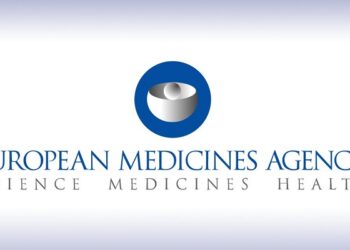Shire plc (LSE: SHP, NASDAQ: SHPG) today announced that the U.S. Food and Drug Administration (FDA) requested an additional clinical study as part of a complete response letter (CRL) to the company’s new drug application for lifitegrast for the signs and symptoms of dry eye disease in adults. Shire has recently completed a Phase 3 study of lifitegrast, OPUS-3, that is expected to be the basis of Shire’s response to the CRL. The FDA also requested more information related to product quality, which Shire will address in the CRL response. Topline results of OPUS-3 are expected before year-end, and, and if positive, the company plans to submit these data as part of a resubmission to the FDA during the first quarter of 2016.
“We will work quickly to address the FDA’s requests related to lifitegrast, as we are committed to delivering a new prescription treatment option for the 29 million adults in the U.S. living with the symptoms of this chronic and progressive disease,” said Philip J. Vickers, Ph.D., Head of Research and Development, Shire.
Symptoms of dry eye disease vary by patient, but typically may include eye dryness, overall eye discomfort, stinging, burning, a gritty feeling and episodes of blurred vision.
OPUS-3, a randomized, double-masked, 12-week Phase 3 study enrolled 711 patients to evaluate the efficacy and safety of lifitegrast. The clinical trial’s primary endpoint is patient-reported symptom improvement as measured by the Eye Dryness Score EDS scale.
The new drug application for lifitegrast included data from four randomized, controlled clinical trials with more than 1,800 patients. These include one Phase 2 study, two Phase 3 efficacy and safety studies (OPUS-1 and OPUS-2), and one long-term Phase 3 safety study (SONATA).
Shire’s Commitment to Ophthalmics
In May 2014, Shire established its Ophthalmics Business Unit, solidifying its commitment to growing in this therapeutic area. Shire’s multi-faceted approach to discovery, development, and delivery in both rare diseases and specialty conditions includes our efforts to address unmet needs in eye care.
Shire’s growth in ophthalmics has been driven by a combination of strategic acquisitions and organic growth. Committed to growing its reputation as a leading biotech company, Shire is focused on continuing to expand its ophthalmics portfolio to include treatment options for rare diseases and those for anterior and posterior eye conditions. In just over two years, acquisitions include Foresight Biotherapeutics, SARcode Bioscience, Premacure AB, and BIKAM Pharmaceuticals, which have helped bolster Shire’s early-, mid- and late-stage ophthalmics pipeline. The Company currently has an ophthalmics pipeline of investigational candidates in dry eye disease, retinopathy of prematurity, autosomal dominant retinitis pigmentosa, glaucoma, and infectious conjunctivitis.
About Lifitegrast
Lifitegrast binds to the integrin lymphocyte function-associated antigen-1 (LFA-1), a cell surface protein found on leukocytes and blocks the interaction of LFA-1 with its cognate ligand intercellular adhesion molecule-1 (ICAM-1). ICAM-1 is over-expressed in corneal and conjunctival tissues in dry eye disease. LFA-1/ICAM-1 interaction contributes to formation of an immunological synapse resulting in T-cell activation and migration to target tissues. In vitro studies have demonstrated that lifitegrast inhibits T-cell adhesion to ICAM-1 expressing cells and inhibits secretion of key inflammatory cytokines (IFNγ, TNFα, IL-2) as well as inhibiting other pro-inflammatory cytokines: IL-1α, IL-1β, IL-2, IL-4, IL-5, and IL-13), all of which are known to be associated with dry eye disease.






















